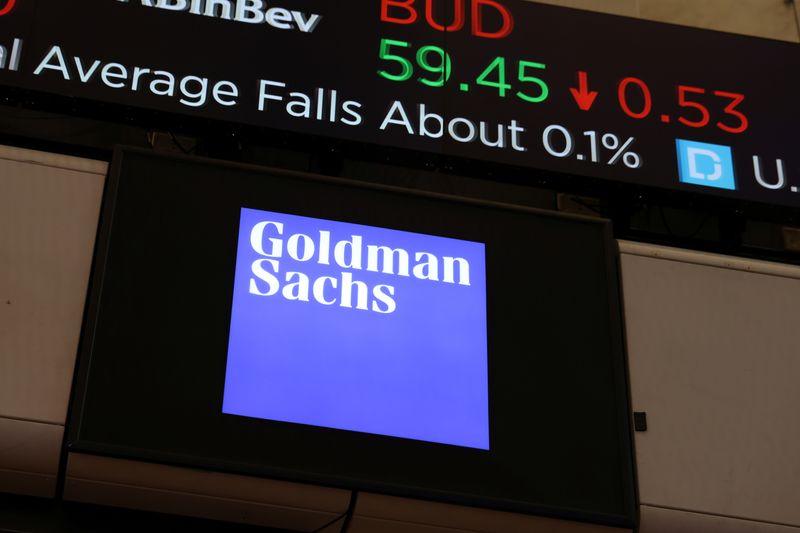By Saeed Azhar and Niket Nishant
NEW YORK (Reuters) -Goldman Sachs' fourth quarter profit beat estimates on Tuesday as its equity traders capitalized on a market recovery and revenue from asset and wealth management rose, offsetting weaker investment banking.
Goldman's equity trading revenue jumped 26% in the quarter. Stock markets have rallied as economists and investors grow more confident the U.S. will avoid a recession. Market participants are also debating when the Federal Reserve will cut interest rates, which could act as another catalyst for activity.
"This was a year of execution for Goldman Sachs," CEO David Solomon said in a statement. "With everything we achieved in 2023 coupled with our clear and simplified strategy, we have a much stronger platform for 2024."
The bank's shares climbed 1.3% in trading before the bell. They rose 12.3% last year, compared with gains of 27% for JPMorgan Chase (NYSE:JPM) and 10% for Morgan Stanley.
Goldman's revenue from asset and wealth management rose 23% to $4.39 billion.
The unit also booked a gain of $349 million from a deal to sell part of its wealth business to an independent wealth manager.
Investment banking fees fell 12% to $1.65 billion, as a decline in mergers and acquisitions (M&A) offset gains from debt and stock sales.
Revenue from fixed income, currencies and commodities (FICC) trading sank 24% as weakness in interest rate products and currencies dragged down gains from mortgage products.
Financing revenue for both FICC and equities hit a record for 2023, with equities financing fueled by prime brokerage services for hedge funds and other large clients, the bank said.
Profit was $2.01 billion, or $5.48 per share, for the quarter, compared with $1.33 billion, or $3.32 per share, a year earlier.
Analysts on average expected a profit of $3.51 per share, according to LSEG data.
"Equity and debt underwriting did well but M&A activity was again weak," said Stephen Biggar, banking analyst at Argus Research. The "rising backlog of deal activity is of course a positive."
The sale of consumer businesses is beginning to have a positive effect, including lower loan loss provisions, while lower headcount is helping to cut costs, Biggar said.
HEADCOUNT
Goldman had 45,300 employees at the end of December, 1% fewer than in the third quarter and nearly 7% lower than in the year-earlier period.
The bank laid off thousands of employees in 2023, including cuts to its workforce in January that were the largest since the 2008 financial crisis.
Goldman is among the banking giants that will pay a special assessment fee to refill a government deposit insurance fund that was drained of $16 billion by the collapse of two regional banks last year.
It recognized a $529 million expense tied to the fee in the fourth quarter.
PLATFORM SOLUTIONS BOOST
Goldman's platform solutions unit, which houses some of its consumer operations, reported a 12% jump in revenue to $577 million.
The jump was driven by higher average credit card balances, which cushioned the hit from markdowns related to the portfolio of GreenSky loans held for sale.
Goldman has been slimming down its ill-fated consumer business, after a reorganization in 2022 that saw it merge its traditional mainstays of trading and investment banking.
GreenSky, which facilitates home improvement loans for consumers, was sold to a consortium of investment firms led by Sixth Street Partners.
Four years after introducing a credit card with Apple (NASDAQ:AAPL), the Wall Street giant also faces a costly exit from a partnership that is seen by other lenders as too risky and unprofitable.
Goldman may need to reduce the value of its stake to tempt bidders to take its place in the partnership, Reuters reported last month.

Provisions for credit losses fell to $577 million in the quarter from $972 million a year earlier.
Meanwhile, it released $160 million of reserves by transferring its General Motors (NYSE:GM) credit card portfolio to a category of assets known as held for sale. General Motors is looking for a new partner to replace Goldman Sachs.